welcome to cathode ray dude's blog. please be aware that i'm a lot cruder on here than on youtube.
you can subscribe via RSS. point your reader here: RSS Feed
640x480 was just the resolution your parents used
here's windows NT 3.51 running at 1600×1200, on 1995-era hardware. seems wacky, but this was probably not that unusual.
break
a lot of people remember their PC in the 90s or even early 2000s running at 640×480 exclusively, but that resolution wasn't really state of the art after about 1988. it got introduced with the IBM PS/2 and it's VGA hardware in 87, but the market almost immediately pushed past it, creating an explosion of “Super VGA” graphics cards that did much higher resolutions, with very wide software support in graphical OSes, especially after the VESA BIOS extensions appeared.
in the above photo, i'm running NT 3.51 (released in 95) in 256-color mode, aka 4-bit color, on a Matrox Millennium 1 (also 1995.) that's the best res it can do on stock VRAM, but it can be expanded to 8MB, and that would deliver this same resolution in 32-bit color. this was not particularly remarkable even for the time - yes, the millennium was an Accelerator, and it cost about $240, but half of that cost (or more) was the hilariously bad 3D hardware that couldn't even do texture mapping. 2D accelerators were quite common by 1995, so if your PC had anything other than a fourth-rate “the graphics card we have at home” Cirrus Logic it could probably deliver this kind of screen mode, and by the early 90s that was likely the case. the problem, though, was monitors
i've heard multiple stories from people who found out they could increase the resolution on their family PCs as kids, then got yelled at for doing so, and this makes sense because it made everything much harder to see - all the screen elements were now smaller and much harder to make out with non-tweenage eyes, particularly on the CRTs of the era. televisions had gotten excellent by the mid 80s and a fairly small sum could get you a very nice display, but those were all running at the same resolution and the technology was super mature. computer monitors were a lot more ambitious though and lagged considerably at the low end.
an awful lot of computer monitors were absolutely terrible for a long time. besides often having miserable shadow masks with garbage dot pitch, they were often very small, not consistently hitting 15“ or larger until the late 90s. if you bought a Packard Bell in like 1995, it probably came with a 14” display, and it probably looked horrible - it would likely ACCEPT scan rates above 640×480, but they'd probably be illegible.
anecdote: circa 2000, my dad brought home a pair of 15“ NEC Multisyncs from work, and i hooked them up to my PC in dual-head and ran each at 1280×1024. this didn't actually work; half the detail on the screen was just being eaten by the shadow mask, and i had to struggle to read anything. i did it because i just demanded more desktop real estate, but it was not actually a good idea, and i'm not sure if there were any 15” CRTs that could do better.
however, displays larger than 15“ existed way back in the 80s.
this first pic is a magazine ad from 1988 advertising, among other things, a 19”, 1600×1200 display. i have never seen one of these in person but i have no doubt they looked just fine. so this was doable - if you had the rupees. obviously these were stupid expensive and meant entirely for people running CAD and desktop publishing. but they did exist!
unfortunately, they took quite a while to get cheap. i'm not sure how much the '88 models cost (guessing they're “if you have to ask” prices) but even by 96 (second image) things were not looking great. 17“ displays were still $600-700, or around $1400 after inflation, so this was like buying one of those Alienware curved OLEDs. what's neat though is that 1024×768 displays were dirt cheap.
the cheapest monitor in that '96 listing was $240, but i suspect prices were lower in bundles, because i flipped through a PC Magazine from mid 92 and not a single computer was being sold with a display that delivered less than that. now, this could be cheating - again, maybe the dot pitch was so bad that you couldn't actually make anything out at that res, but i'm not sure. virtually everything i can find claims a 0.28mm dot pitch, which a quick google suggests is pretty decent. one 1992 monitor ad even Calls Out displays with .39 dot pitch, so i kinda suspect these are the genuine article.
so, while virtually every picture of windows 3.x that i've ever seen was at 640×480, the reality was probably that a lot of them came out of the box at 1024.
and that never stops feeling weird, right? you just expect progman to fill most of the screen, and that's how i remember it looking when i was using it as a kid. but chances are extremely good that in 1992, and maybe even in 1990, an enormous number of people had this experience out of the box - and that was just the low to midrange experience. if you were an enthusiast or professional, it's entirely possible you ran it at 1280 or even 1600. it was completely achievable; $1,400 for a monitor, in Nearly-Eighties Dollars, is quite a bit - but most people buying PCs back then were spending an enormous amount on them already, so by the standards of the market, this was not out of the question:
i don't happen to have a 1600×1200 CRT handy (mine are all at the office) and that's why i'm doing this on an LCD through a scaler, but otherwise this is a fairly authentic photo of a reasonable PC experience for 1995. imagine fitting all this crap on your screen at once! now mind you, the specs on this machine are a bit chubby for the era, it is a workstation-class system, so it has dual CPUs (hence NT) and 64MB of RAM, quite a bit for the time, but i doubt that much of that is even being consumed by these particular apps, short of maybe the video player. and it's usable! it doesn't really feel weird after a little bit! i mean, navigating between apps without a taskbar sucks, but what else is new, early GUIs were just trash in that regard. otherwise, it feels great.
but the point of all of this is to demonstrate that, apparently, it was possible to play castle of the winds, in its heydey, without the screen ever scrolling
okay, okay, i'm lying, it scrolls a LITTLE bit, but it's INCREDIBLY funny to load up a new game and see the entire village on one screen. the field outside the village also mostly fits on one screen (it scrolls two lines when you advance toward the mountain) and at least the first level of the dungeon nearly fits on one screen, which is kind of a neat homage to the original rogue now that i think about it.
the last image is from episode two of the game, which i had never seen before now. it turns out that this one starts you in a much more built-up town that takes up like 3×2 screens even at this res, which is always weird to think about. like, i know the game world is not stored as a bitmap, it's a set of tile IDs, so this takes up only a few kilobytes on disk (and less for the dungeons, which are all generated anyway) but it's still strange to imagine a game of this era offering a world that seems to take up a 4800×2400 area. anyway, there you go
![[H] cathode ray dude's blog](/lib/exe/fetch.php?media=wiki:logo.png)
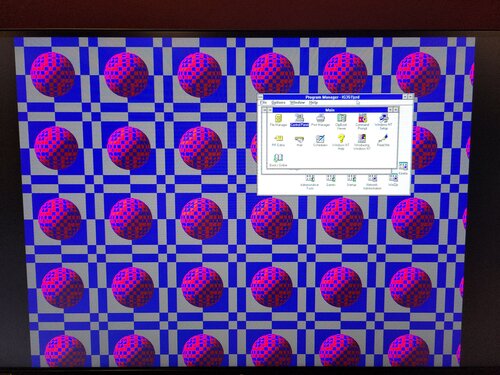

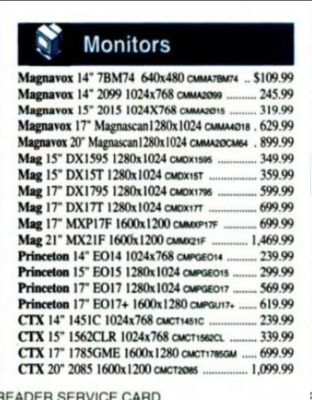

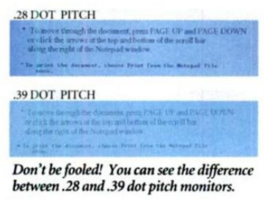




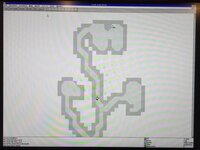
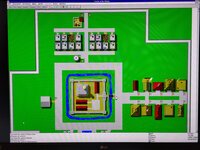
Discussion
i loved cranking up the resolution on other people’s computers as a kid because it was free real estate, until one time on my cousin’s computer where i accidentally saved a setting beyond what the monitor would attempt to display, rendering his computer unusable
I wanted to question this because didn't Windows always have the “click yes if you can see this” prompt? but I guess it is easy to hit Spacebar or Enter by accident…
around 2000+ we had a weird completely unbranded CRT with our Win98/Win2000 computer at home. (whoever sold it to us had set it up as dual-boot, and the oval trash can of Win2000 is *etched* into my memory.) It originally ran at 640×480, then it rose to 800×600, then 1024×768.
it was all fine until one day I decided to try out a SuSE Linux CD that came with a magazine (had no problems playing with Knoppix before), and it somehow decided that 1600×1200 was a good default for a display that was too old to have EDID, and two minutes later I had fried the CRT.
In the early 90s we had a 386 with a 14-inch monitor and it had some sort of SVGA card. I don't think the card was terrible, but I'm sure it wasn't the greatest either. I remember as a kid discovering drivers for it and figuring out the trade-offs between size and color depth. I think I settled on 1024×768, but it's been so long that my memory is hazy. It seemed pretty usable, so either we had a good monitor or I was fooling myself. Dad didn't yell at me or change it back, so I assume it was fine.
A surprising amount of Windows 3.1 shareware developers apparently never went bigger than 640×480, though, and it was really obvious.
Around 2008 at work when they were just starting to replace CRTs with LCD monitors, I wouldn't let them take my 17-inch CRT away. “The LCD monitor is bigger,” they'd say, which was true, but missing the point. I wanted to keep running 1600×1200, and the LCD could only do 1024×768. That would have been a downgrade, not an upgrade.
i've often thought about this too - that we've always had high resolutions, but no support for proper font scaling on windows until relatively recently. so i guess proper work-related usage of larger resolutions were reserved for like, unix workstations and the like?